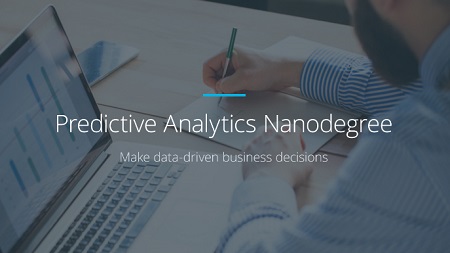
English | MP4 | AVC 1280×720 | AAC 44KHz 2ch | 15h 44m | 3.86 GB
Gain foundational data skills applicable to any industry. Collect and analyze data, model business scenarios, and communicate your findings with SQL, Excel, and Tableau
This program is for anyone who wishes to gain foundational data skills that are applicable to virtually all fields. You’ll learn to collect, organize, and analyze data with Excel and SQL; build Excel models to analyze possible business outcomes; and visualize and communicate your findings using Tableau. This program is an ideal choice whether you’re just getting started with data, are interested in applying data skills to your current role, or plan to pursue further studies or career goals.
Part 01 : Problem Solving with Analytics
Part 02 : Data Wrangling
Understand the most common data types. Understand the various sources of data. Make adjustments to dirty data to prepare a dataset. Identify and adjust for outliers. Learn to write queries to extract and analyze data from a relational database.
Part 03 : Data Visualization
Understand the importance of data visualization. Know how different data types are encoded in visualizations. Select the most effective chart or graph based on the data being displayed.
Part 04 (Career): Career: Job Search Strategies
Opportunity can come when you least expect it, so when your dream job comes along, you want to be ready.
Part 05 : Classification Models
You will use classification models, such as logistic regression, decision tree, forest, and boosted, to make predictions of binary and non-binary outcomes.
Part 06 : A/B Testing
Understand the fundamentals of A/B testing, including experimental design, variable selection, and analyzing and interpreting results.
Part 07 (Career): Career: Networking
Networking is a very important component to a successful job search. In the following lesson, you will learn how tell your unique story to recruiters in a succinct and professional but relatable way.
Part 08 : Time Series Forecasting
Understand trend, seasonal, and cyclical behavior of time series data. Use time series decomposition plots. Build ETS and ARIMA models.
Part 09 : Segmentation and Clustering
Understand the difference between localization, standardization, and segmentation. Scale data to prepare a dataset for cluster modeling. Use principal components analysis (PCA) to reduce the number of variables for cluster model. Build and apply a k-centroid cluster model. Visualize and communicate the results of a cluster model.
Part 10 (Elective): Deprecated SQL Lessons
Part 11 (Elective): Deprecated Tableau Lessons
Table of Contents
1 Orientation
2 Predicting Diamond Prices
3 The Analytical Problem Solving Framework
4 Selecting an Analytical Methodology
5 Linear Regression
6 Practice Project
7 Predicting Catalog Demand
8 Understanding Data
9 Data Issues
10 Data Formatting
11 Data Blending
12 Practice Project
13 Create an Analytical Dataset
14 Selecting Predictor Variables
15 Practice Project Select Location of a New Petstore
16 Basic SQL
17 SQL Joins
18 SQL Aggregations
19 SQL Subqueries & Temporary Tables
20 SQL Data Cleaning
21 [Advanced] SQL Window Functions
22 [Advanced] SQL Advanced JOINs & Performance Tuning
23 Create Reports from a Database
24 Intro to Data Visualization
25 Design
26 Data Visualizations in Tableau
27 Making Dashboards & Stories in Tableau
28 Visualizing Movie Data
29 Conduct a Job Search
30 Refine Your Entry-Level Resume
31 Refine Your Career Change Resume
32 Refine Your Prior Industry Experience Resume
33 Craft Your Cover Letter
34 Classification Problems
35 Binary Classification Models
36 Non-Binary Classification Models
37 Predicting Default Risk
38 AB Testing Fundamentals
39 Randomized Design Tests
40 Matched Pair Design Tests
41 Matched Pair Practice
42 AB Test a New Menu Launch
43 Develop Your Personal Brand
44 LinkedIn Review
45 Udacity Professional Profile
46 Fundamentals of Time Series Forecasting
47 ETS Models
48 ARIMA Models
49 Analyzing and Visualizing Results
50 Forecast Video Game Sales
51 Segmentation Fundamentals
52 Preparing Data for Clustering
53 Variable Reduction
54 Clustering Models
55 Validating and Applying Clusters
56 Segmentation Practice Project
57 Combining Predictive Techniques
58 Data and Tables
59 Problem Set Data and Tables
60 Elements of SQL
61 Problem Set Elements of SQL
62 Deeper into SQL
63 Problem Set Deeper Into SQL
64 Data Visualization Fundamentals
65 Design Principles
66 Creating Visualizations in Tableau
67 Telling Stories with Tableau
Resolve the captcha to access the links!